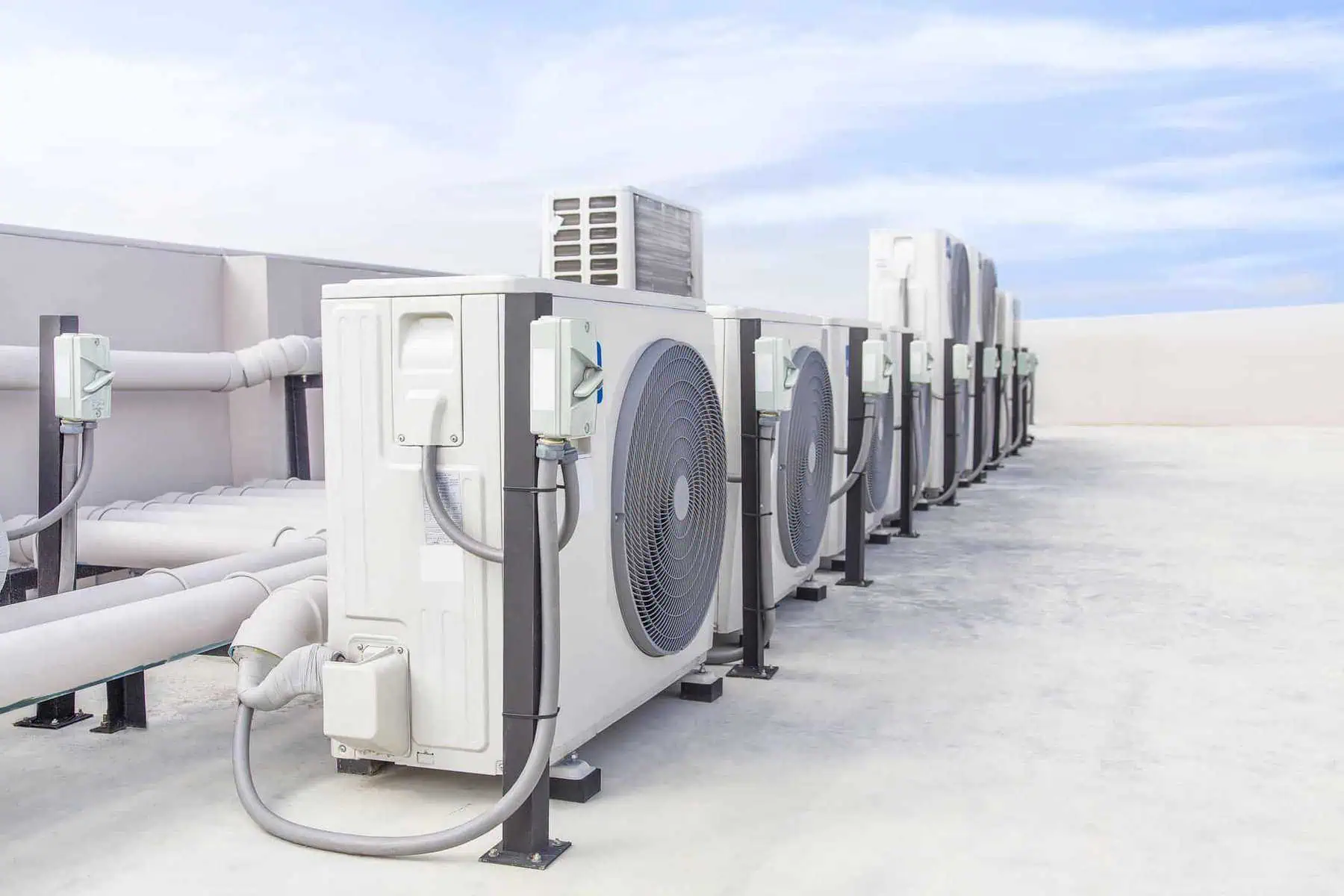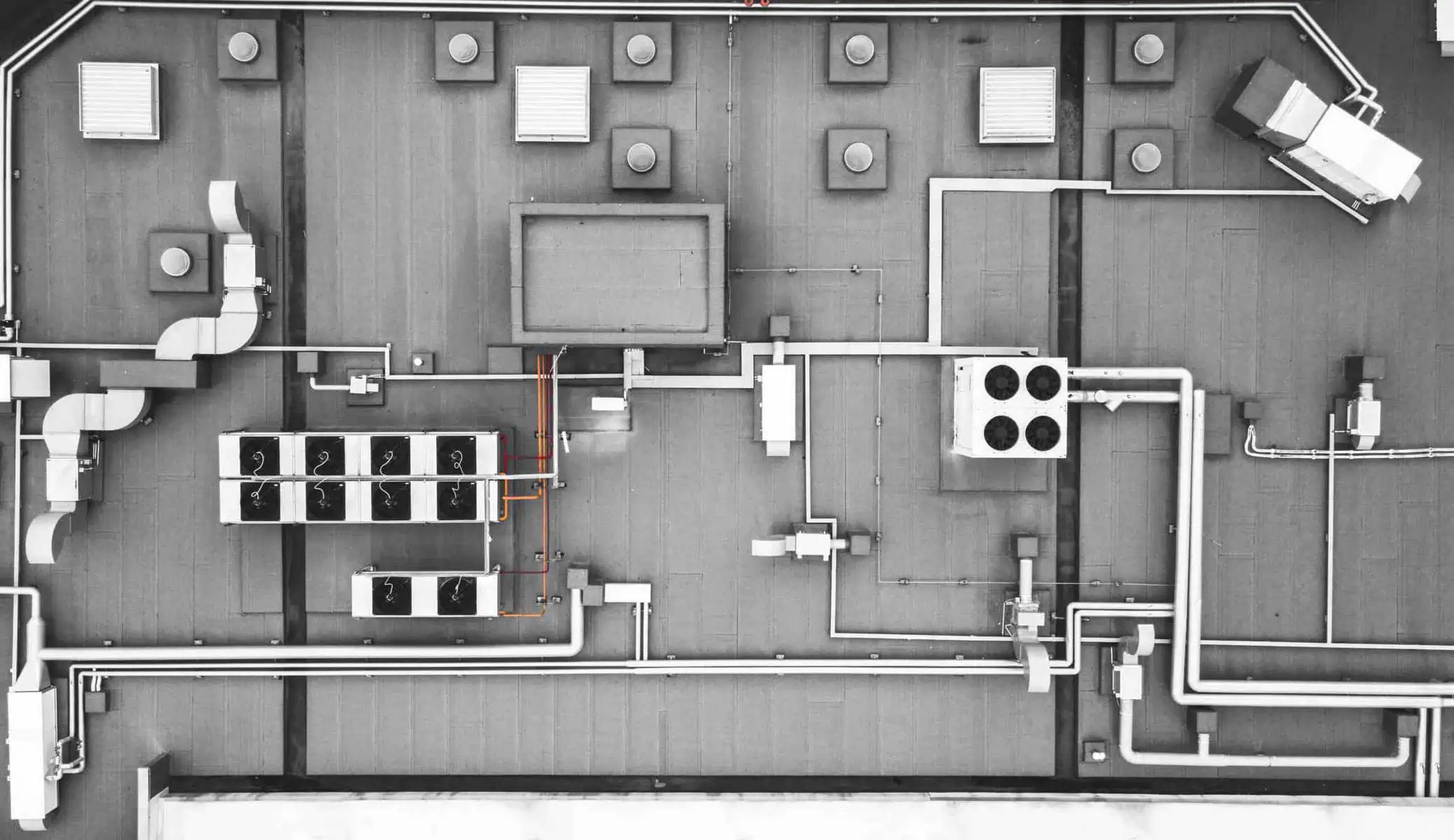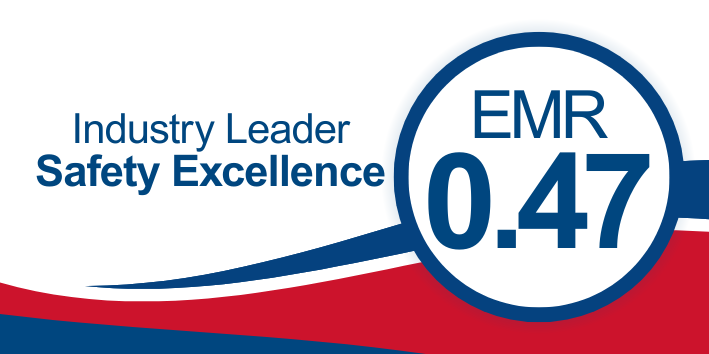Ventilation systems on commercial buildings help regulate temperature and moisture levels – and help maintain a comfortable indoor environment. Many issues arise when a commercial roof lacks adequate ventilation. Let’s discuss a few of these problems and tell you how you can be sure your commercial roof ventilation system provides sufficient airflow.
Problems From Poor Commercial Roof Ventilation
Of course, proper airflow is essential in all buildings as ventilation systems help remove toxins from the air. For example, labs and hospitals must have specialized ventilation for infection control.
However, this article will focus on roof ventilation – and the problems that can occur if a roof isn’t properly ventilated.
Excess humidity and moisture are trapped inside the building.
Ventilation systems allow heat and humidity to escape from the upper part of the building – especially during the summer. If you see condensation, signs of water droplets, or rust – you may have a problem with ventilation.
This moisture can cause decay and rot in the roof’s structural elements. In addition, this moisture can become a habitat for microbial and plant growth.
Roofing materials don’t last as long.
Heat and moisture caused by poor ventilation can cause premature aging and damage to roofing materials. Excessive heat can cause commercial roofing materials to warp and crack, leading to leaks inside the building.

HVAC systems don’t last as long.
An overworked air conditioner doesn’t last as long if a building doesn’t have proper ventilation. The heat in the upper regions of the building will seep into the rest of the space. The building’s air conditioning unit will have to work hard to maintain a comfortable temperature – leading to increased energy usage during the summer months. Of course, this strained HVAC system will require more maintenance and repairs and won’t last as long.
Ice dams form.
Roof ventilation is essential in cold climates as well. The balance of temperatures and airflow between the indoors and outdoors is critical during the winter to keep ice dams from forming.
When warm air collects under the roof of the commercial building, the snow sitting on top of the structure begins to melt. But when temperatures drop, the melting snow turns into ice – causing an ice dam.
Ice dams keep gutter and drainage systems from functioning as they should. The ice buildup can cause additional stress on the roof systems and excess weight on the structure of the building.
How To Tell Your Commercial Roof Vents Are Functioning Properly
You may see signs that your commercial roof vents are not working as they should. Those signs may include excess humidity inside the building, roofing material damage, and increased energy usage during the summer. However, there may be other causes for these issues unrelated to your roof vents.
The only way to know if your commercial roof ventilation system is designed correctly is to have a professional roof inspection of the vents on your building.
Nations Roof offers clients a full range of commercial roofing services. We offer new roof installation (including installing all types of roof vents and fans). Nations Roof also offers preventive maintenance and inspections. Our roofing experts will identify and address deficiencies in your ventilation system before they cause major problems.
Contact Nations Roof today to find a location closest to you.
Key Takeaways About the Importance of Airflow
- Inadequate ventilation causes excess humidity inside the building.
- Ventilation systems increase the lifespan of commercial roofing materials and HVAC systems.
- Ice dams can form in cold climates if the commercial roof vents aren’t working correctly.

